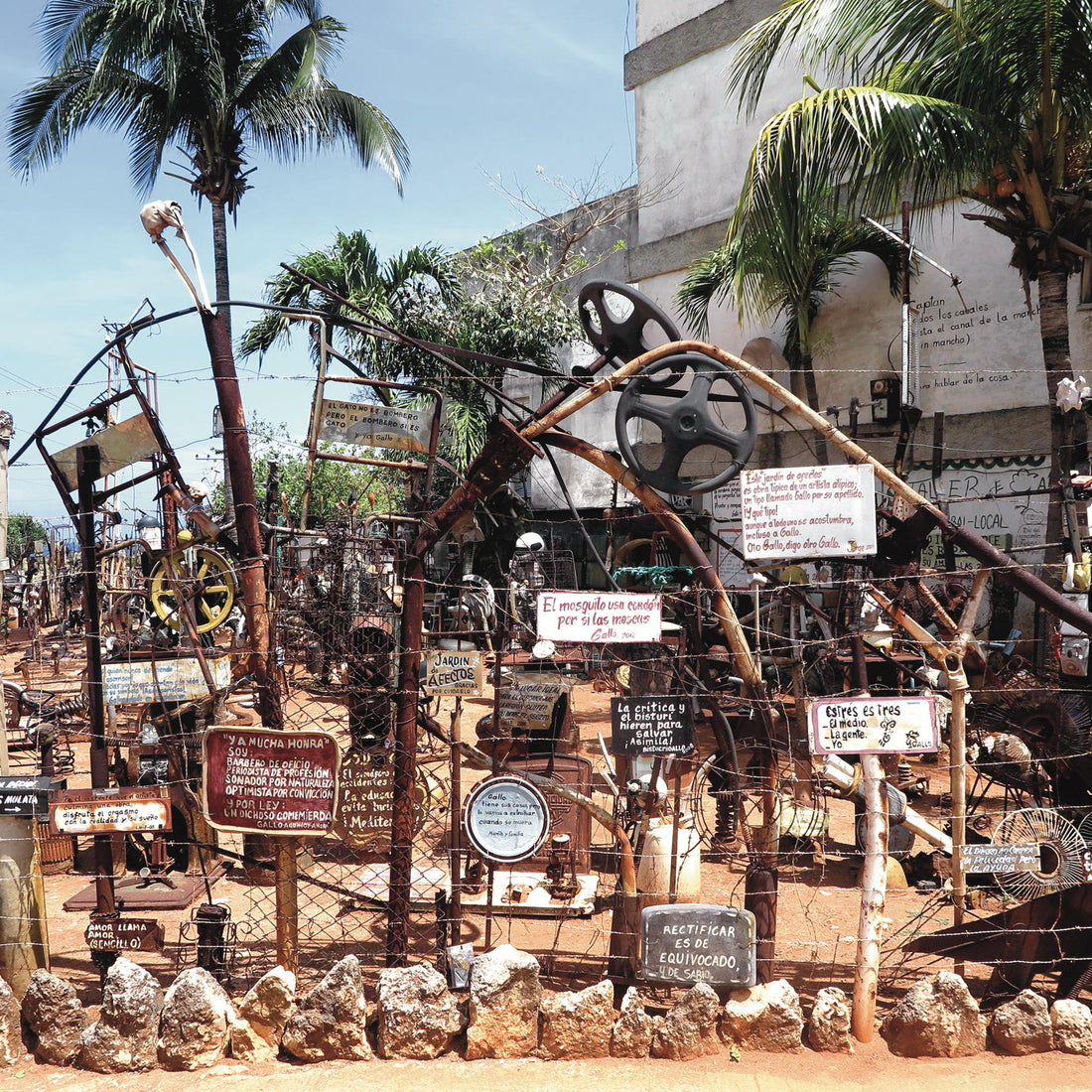First published: Autumn 2022
Cuban artist “Gallo” was a barber and then a spy before hard times led him to find a new life and the joy of creating
Hector Pascual Gallo Portieles (known as “Gallo”) was born in 1924, in Campo Florido, Cuba, and passed away in 2020, in the Alamar, an eastern seaside suburb of Havana, to which tourists rarely venture. The suburb is known for its 1970s-era blocks of flats that were constructed with Russian aid, intended to house 50,000 people and offer all the comforts of the modern era. Today, some 120,000 people live there, the buildings decaying, the essential infrastructure still unfinished or not maintained. It was in an area of Alamar called Micro X that Gallo lived his later years, alone since his wife’s death in 2016.

Gallo created Jardín de los Afectos next to his home in Micro X. All photos: Hervé Couton, 2017
In his nineties, with his beard and long hair, his jangling bracelets and beads, he looked like a prophet. By this point, he was making less art, but he received any visitors showing interest in his creations with great pleasure and a warmth that reflected his humanist philosophy of life.

The artist included many personal aphorisms in his work
In the 1990s, a battered car bumper, given to him by a neighbour, sparked the idea of divorcing items from their original function and giving them new life as sculpture. It gave new life to Gallo too: he went from being a broken man to one who exuded vitality. Creating became his driving force. Little by little, he gathered discarded materials and old machines and appliances – televisions, calculators, cash registers – and began to create a garden of sculptures and installations that he called “Jardín de los Afectos” (Garden of Affections) in homage to love and optimism.

The artist included many personal aphorisms in his work
If at first his neighbours took him for a madman, the sincerity with which he built his new universe, and the kindness and humanity with which he shared it with others, changed their opinion. They began to leave him items that they no longer used, “objects of sentimental value, which they no longer wanted to keep but were not ready to throw away”, as Gallo described them.
By HERVÉ COUTON
This is an article extract; read the full article in Raw Vision #112




